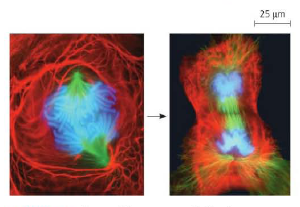As astronomers study newly discovered planets orbiting distant stars, they hope to find evidence of water on these far-off celestial bodies, for water is the substance that makes possible life as we know it here on Earth. All organisms familiar to us are made mostly of water and live in an environment dominated by water. Water is the biological medium here on Earth, and possibly on other planets as well.
Three-quarters of Earth's surface is submerged in water. Although most of this water is in liquid form, water is also present on Earth as ice and vapor. Water is the only common substance to exist in the natural environment in all three physical states of matter: solid, liquid, and gas. The abundance of water is a major reason Earth is habitable. In a classic book called The Fitness of the Environment, ecologist Lawrence Henderson highlights the importance of water to life. While acknowledging that life adapts to its environment through natural selection, Henderson emphasizes that for life to exist at all, the environment must first be a suitable abode.
Life on Earth began in water and evolved there for 3 billion years before spreading onto land. Modern life, even terrestrial (land-dwelling) life, remains tied to water. An living organisms require water more than any other substance. Human beings, for example, can survive for quite a few weeks without food, but only a week or so without water. Molecules of water partidpate in many chemical reactions necessary to sustain life.
Most cells are surrounded by water, and cells themselves are about 70-95% water.
What properties of the simple water molecule allow it to function as a support to all living organisms? In this chapter, you will learn how the structure of a water molecule allows it to interact with other molecules, including other water molecules. This ability leads to unique emergent properties that support and maintain living systems on our planet. Your objective in this chapter is to develop a conceptual understanding of how water contributes to the fitness of Earth for life.
Three-quarters of Earth's surface is submerged in water. Although most of this water is in liquid form, water is also present on Earth as ice and vapor. Water is the only common substance to exist in the natural environment in all three physical states of matter: solid, liquid, and gas. The abundance of water is a major reason Earth is habitable. In a classic book called The Fitness of the Environment, ecologist Lawrence Henderson highlights the importance of water to life. While acknowledging that life adapts to its environment through natural selection, Henderson emphasizes that for life to exist at all, the environment must first be a suitable abode.
Life on Earth began in water and evolved there for 3 billion years before spreading onto land. Modern life, even terrestrial (land-dwelling) life, remains tied to water. An living organisms require water more than any other substance. Human beings, for example, can survive for quite a few weeks without food, but only a week or so without water. Molecules of water partidpate in many chemical reactions necessary to sustain life.
Most cells are surrounded by water, and cells themselves are about 70-95% water.
What properties of the simple water molecule allow it to function as a support to all living organisms? In this chapter, you will learn how the structure of a water molecule allows it to interact with other molecules, including other water molecules. This ability leads to unique emergent properties that support and maintain living systems on our planet. Your objective in this chapter is to develop a conceptual understanding of how water contributes to the fitness of Earth for life.




















